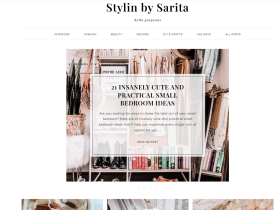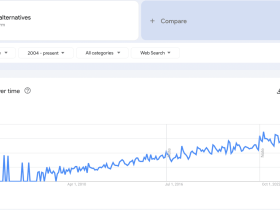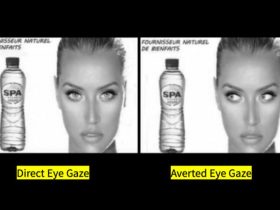Thailand is suddenly one of the most searched destinations on travel websites, and that’s no coincidence. The highly anticipated third season of The White Lotus has arrived, and with it comes a wave of brand collaborations that feel more curated than ever. But this time, it’s not just about slapping a logo onto a product for a quick marketing win. This is about authenticity, relevance, and leveraging pop culture to drive purchasing decisions.
In today’s marketing landscape, consumers crave experiences over just products. They want to feel immersed, transported, and, most importantly, connected to the things they love. And that’s exactly what The White Lotus has managed to do through its brand collaborations, creating partnerships that feel like natural extensions of the show’s luxurious, escapist world rather than gimmicky tie-ins.
So, what makes these collaborations work so well? And what can brands learn from them?
The Power of Pop Culture in Driving Consumer Behavior
We’ve seen it before: a hit show or movie influences what people wear, what they buy, and even where they travel. Think about how Emily in Paris spiked sales in berets and baguettes or how Succession made quiet luxury a status symbol. Pop culture holds an undeniable grip on consumer choices, and The White Lotus is proving to be no different.
Since its premiere, The White Lotus has been more than just a TV show—it’s a cultural phenomenon. Viewers aren’t just watching; they’re fantasizing about being a part of its opulent world. And brands have taken note, stepping in to transform that fantasy into something tangible.
Take travel, for example. The moment The White Lotus confirmed its Season 3 setting in Thailand, travel searches for the destination skyrocketed. According to recent reports, searches for Thailand increased by 50% across multiple travel websites, and searches for Four Seasons Koh Samui, where much of the show was filmed, jumped by 40%. It’s a clear sign that viewers don’t just want to watch The White Lotus; they want to live it.
Luxury Meets Intentionality: The White Lotus x Four Seasons
The White Lotus and Four Seasons collaboration is a match made in heaven. Given that every season of the show is set in a fictionalized version of a Four Seasons resort, the brand’s involvement feels seamless and organic rather than forced.
For Season 3, Four Seasons has leaned into the hype by offering The White Lotus-themed wellness retreats. These exclusive packages mirror the opulent experiences seen on screen—luxurious spa treatments, guided meditation, and immersive cultural experiences, allowing guests to step into the world of The White Lotus themselves.
Rather than just slapping The White Lotus name onto a standard hotel package, Four Seasons has crafted an experience that reflects the show’s themes: indulgence, escape, and self-discovery. It’s a lesson in intentionality—something many brand collaborations lack.
Beyond the Resort: Travel-Related Brands Cash In
While Four Seasons had the most obvious synergy, other travel-adjacent brands also seized the opportunity to align with The White Lotus lifestyle. And the best part? They all make sense.
Supergoop, Away, and Diff Eyewear are among the key brands that have partnered with The White Lotus this season. Each of these brands ties into the travel and luxury themes of the show:
- Supergoop, the premium sunscreen brand, fits naturally into the tropical setting of Thailand. Its collaboration aligns with the idea of lounging poolside, basking in the sun, but with the necessary protection.
- Away, known for its sleek, minimalist luggage, plays into the White Lotus jet-setter fantasy. Traveling in style is a key part of the show’s aesthetic, and Away’s inclusion feels more like an enhancement than a forced partnership.
- Diff Eyewear, specializing in fashionable sunglasses, fits perfectly with the resort atmosphere. Stylish, functional, and aspirational—exactly what The White Lotus embodies.
By focusing on travel-related brands, these collaborations feel purposeful rather than opportunistic. They don’t just borrow The White Lotus name; they extend the experience.
Influencer Marketing Done Right: Kiehl’s Clever PR Move
Not all White Lotus brand collabs are directly tied to travel. Some brands have taken a more creative, influencer-driven approach—like Kiehl’s.
Instead of launching a traditional product collab, Kiehl’s leaned into The White Lotus aesthetic for a clever PR stunt. They sent influencers White Lotus-themed PR kits, packaged with leis and personalized notes as if they were employees of the fictional White Lotus resort. This wasn’t just about sending products, it was about creating an experience that influencers could share with their audiences, making fans feel like they, too, were checking into an exclusive White Lotus getaway.
This approach worked because it felt authentic. Instead of forcing a connection between skincare and a TV show, Kiehl’s played on the idea of luxury and self-care, concepts that resonate deeply with The White Lotus audience.
The Fine Line Between Immersion and Overkill
For every successful brand collab, there’s an example of what not to do.
With partnerships ranging from hair tools to coffee to Crocs, Wicked quickly became an example of consumer fatigue. The sheer volume of collabs diluted the brand’s impact, making it feel like a cash grab rather than an experience.
This is where The White Lotus has excelled. By keeping its partnerships curated and intentional, the show has managed to extend its world without oversaturating the market. The lesson here? Less is often more. When brands chase relevancy without strategy, they risk turning excitement into exhaustion.
The Future of Pop Culture x Brand Collaborations
As TV shows and movies continue to shape consumer behavior, brands will have to rethink their approach to pop culture marketing. The days of simple product placement are over—today’s consumers want immersive experiences, not just ads.
The White Lotus has set the gold standard for how brands can align with entertainment in a way that feels natural, aspirational, and engaging.
So, what do you think? Are these White Lotus collabs hitting the mark, or is there still room to refine the art of pop culture marketing?




